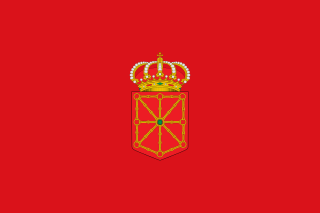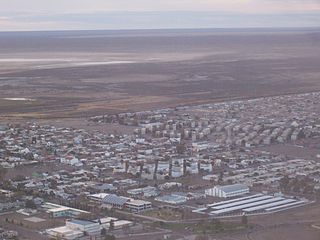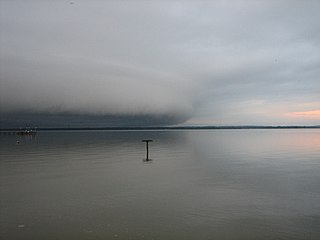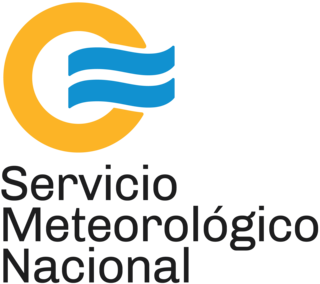| Established | 19 June 1990 |
|---|
Euskalmet (in Basque: Euskal Meteorologia Agentzia, English: Basque Agency of Meteorology) is the Basque service of meteorology, established in 1990. [1]
| Established | 19 June 1990 |
|---|
Euskalmet (in Basque: Euskal Meteorologia Agentzia, English: Basque Agency of Meteorology) is the Basque service of meteorology, established in 1990. [1]

Basque (; euskara, [eus̺ˈkaɾa]) is a language spoken by Basques and others of the Basque Country, a region that straddles the westernmost Pyrenees in adjacent parts of northern Spain and south-western France. Linguistically, Basque is a language isolate. The Basques are indigenous to, and primarily inhabit, the Basque Country. The Basque language is spoken by 28.4% (751,500) of Basques in all territories. Of these, 93.2% (700,300) are in the Spanish area of the Basque Country and the remaining 6.8% (51,200) are in the French portion.

Navarre, officially the Chartered Community of Navarre, is a foral autonomous community and province in northern Spain, bordering the Basque Autonomous Community, La Rioja, and Aragon in Spain and Nouvelle-Aquitaine in France. The capital city is Pamplona. The present-day province makes up the majority of the territory of the medieval Kingdom of Navarre, a long-standing Pyrenean kingdom that occupied lands on both sides of the western Pyrenees, with its northernmost part, Lower Navarre, located in the southwest corner of France.

Rawson (Spanish pronunciation: [ˈrawson] is the capital of the Argentine province of Chubut, in Patagonia. It has 24,616 inhabitants in 2010, and it is the chief town of the Rawson Department.
HIRLAM, the High Resolution Limited Area Model, is a Numerical Weather Prediction (NWP) forecast system developed by the international HIRLAM programme.

San Luis is the capital city of San Luis Province in the Cuyo region of Argentina. It is also the seat of the Juan Martín de Pueyrredón Department.

The Servicio Meteorológico Nacional (SMN) is Mexico's national weather organization. It collects data and issues forecasts, advisories, and warnings for the entire country.

The Institute of Hydrology, Meteorology and Environmental Studies, also known by its acronym in Spanish, IDEAM, is a government agency of the Ministry of Environment and Sustainable Development of Colombia. It is in charge of producing and managing the scientific and technical information on the environment of Colombia, and its territorial composition. The IDEAM also serves as the Colombian institute of meteorology and studies the climate of Colombia. The agency is currently led by the Director General, forestry engineer Yolanda González Hernandez. González Hernández is a specialist in Geographic Information Systems with a Masters in Meteorology Sciences from the National University of Colombia, and is the first woman to lead the agency.
The Mozambique National Institute of Meteorology is the national meteorological organization of Mozambique.
The Instituto Português do Mar e da Atmosfera or IPMA is the national meteorological, seismic, sea and atmospheric organization of Portugal.
The State Meteorological Agency or Agencia Estatal de Meteorología (AEMET) is an state agency of the Government of Spain responsible for providing weather forecast, warnings of hazardous weather and assisting the administrations with tasks over civil defence and state defence and security. The AEMET is part of the Secretariat of State for Environment of the Ministry for the Ecological Transition and is headquartered in the University City, Madrid. The agency was known as Central Institute of Meteorology from 1887 to 1978 and National Institute of Meteorology from 1978 to 2008 when it adopted its current name.

The National Institute for Seismology, Vulcanology, Meteorology and Hydrology of Guatemala is a scientific agency of the Guatemalan government. The agency was created to study and monitor atmospheric, geophysical and hydrological phenomena and events, its hazards to Guatemalan society, and to provide recommendations to the government and the private sector in the occurrence of natural disasters. The agency has four major science disciplines, concerning Seismology, Vulcanology, Meteorology and Hydrology.
Dirección Nacional de Aeronáutica Civil (DINAC) is the civil aviation agency of Paraguay. Its headquarters is in Asunción. The Departamento de Investigacion de Accidentes de Aviacion (DIAA) of DINAC investigates aviation accidents. The agency is presided over by a general director, and organised into four main areas:
Simón Sarasola (1871–Dec/12/1947) was a Spanish meteorologist and Jesuit priest. He was president of the Belen Jesuit Preparatory School at Havana, and director of the National Meteorological Observatory. After the opening of Panama Canal (1914), he founded the Montserrat Observatory in Cienfuegos, southern Cuba. He moved to Bogotá (Colombia) in 1921, where participated in the creation of the weather observatory of Colegio Nacional de San Bartolomé in Bogotá and the reorganization of a national meteorological service. In 1923 established the first seismograph in Colombia. He co-founded the Geophysical Institute of the Colombian Andes with J. E. Ramírez in 1941.
Instituto Nacional de Meteorologia (INMET) is the national meteorological organization of Brazil, responsible for weather forecasting, collecting climate data, and alerting the public of extreme weather. It is part of the Ministry of Agriculture, Livestock and Food Supply.

A galerna is a sudden and violent storm with strong wind gusts from the west or northwest that affects coastal areas of the Bay of Biscay, predominantly during spring and fall. It especially affects the central and eastern part of the Spanish north coast and the southwestern region of France. The name comes from French galerne and that originates from Breton (gwalarn), a wind from the northwest.

The 2019–20 European windstorm season was the fifth instance of seasonal European windstorm naming in Europe. This is the first season in which the Netherlands participates, joining Ireland's and the United Kingdom's meteorological agencies. The new season's storm names were released on 6 September 2019. In July 2019, it was announced that storm seasons would run from 1 September 2019 to 1 September 2020. The Portuguese, Spanish and French meteorological agencies again collaborated too, joined by the Belgian meteorological agency.

The Servicio Meteorológico Nacional (SMN) is Argentina's national weather service under the Ministry of Defense that is tasked with observing, understanding, and predicting the weather and climate in Argentina and its surrounding waters. It provides weather forecasts, radar images, ozone, temperature and rainfall graphs, and satellite images. The purpose of these tasks is to contribute to protection of its inhabitants, sustainable economic development and to provide representation of Argentina to international meteorological organizations. Founded on 4 October 1872 by Federal law Nº559 during the presidency of Domingo Faustino Sarmiento, the organisation was the first meteorological organisation in South America and the third one in the world, after Hungary and the United States which were created in 1870 and 1871 respectively. It became a member of the World Meteorological Organization on 2 January 1951. Throughout its history, the organisation was dependent under different government ministries until in 2007 when it is currently under the Ministry of Defense.
The INTA-100 vehicle was a small 2-stage meteorological sounding rocket designed and developed between the 1980s and the 1990s by the Instituto Nacional de Técnica Aeroespacial (INTA). The final design was entirely produced in Spain to be used by the Instituto Nacional de Meteorología in conducting experiments on the atmosphere.